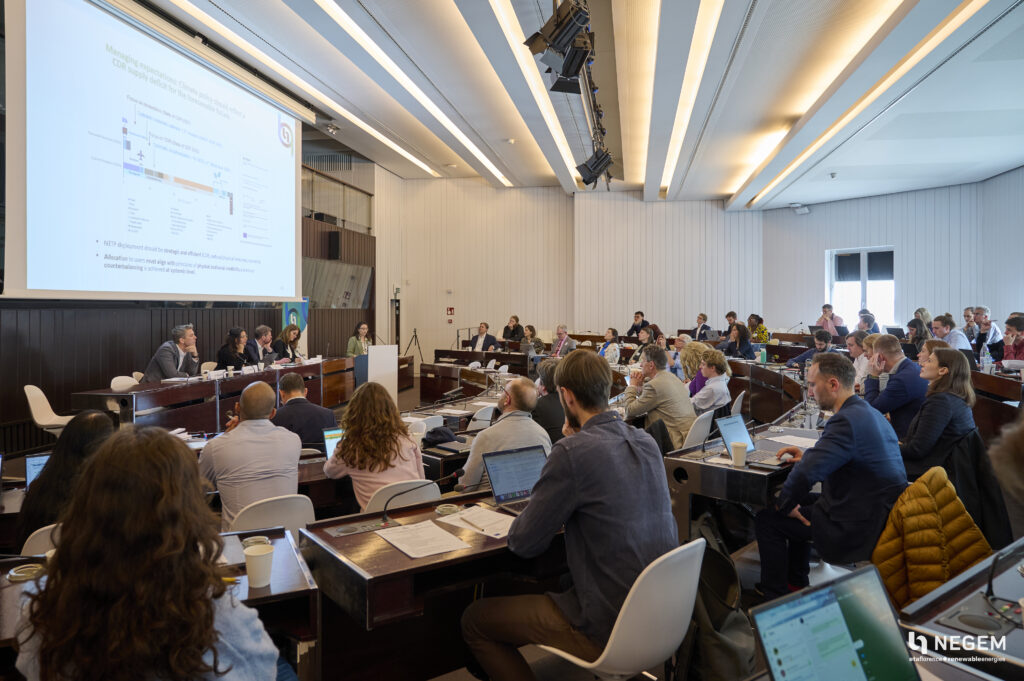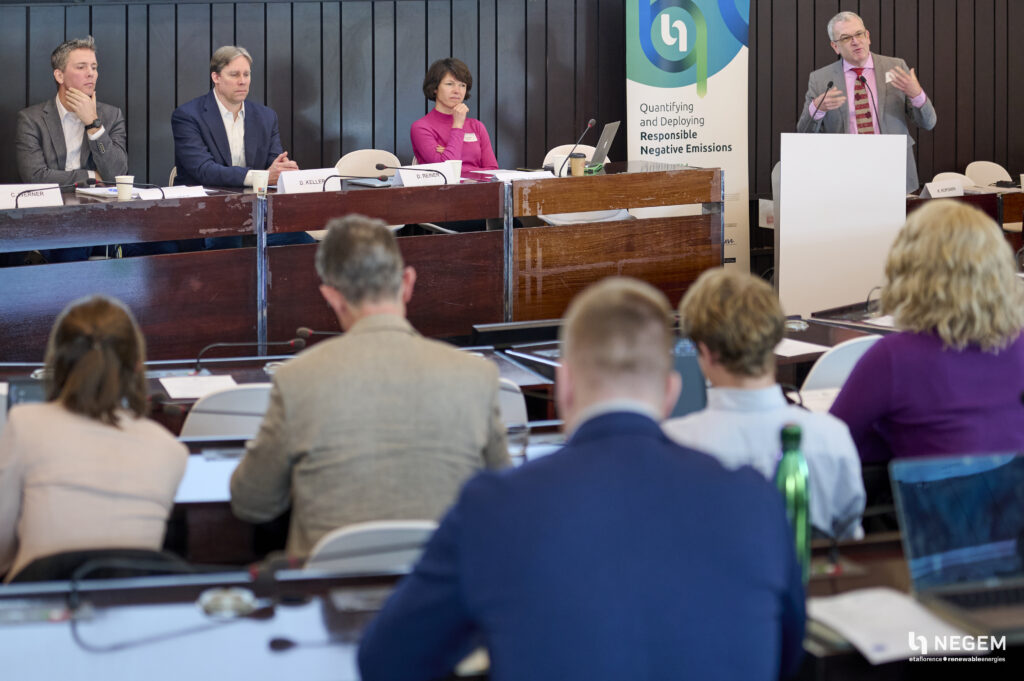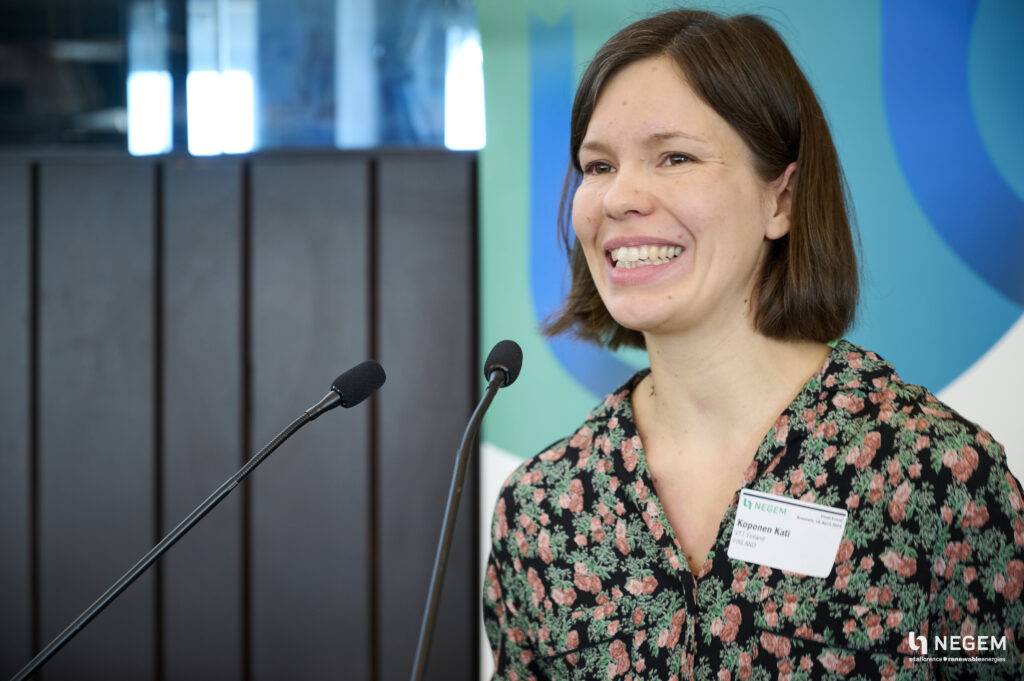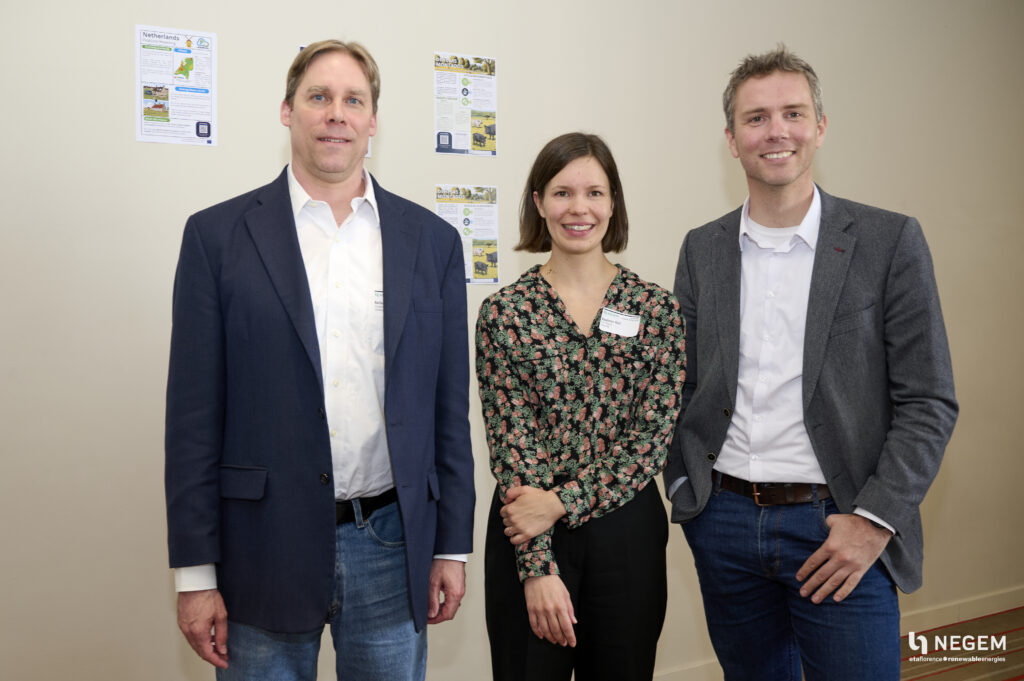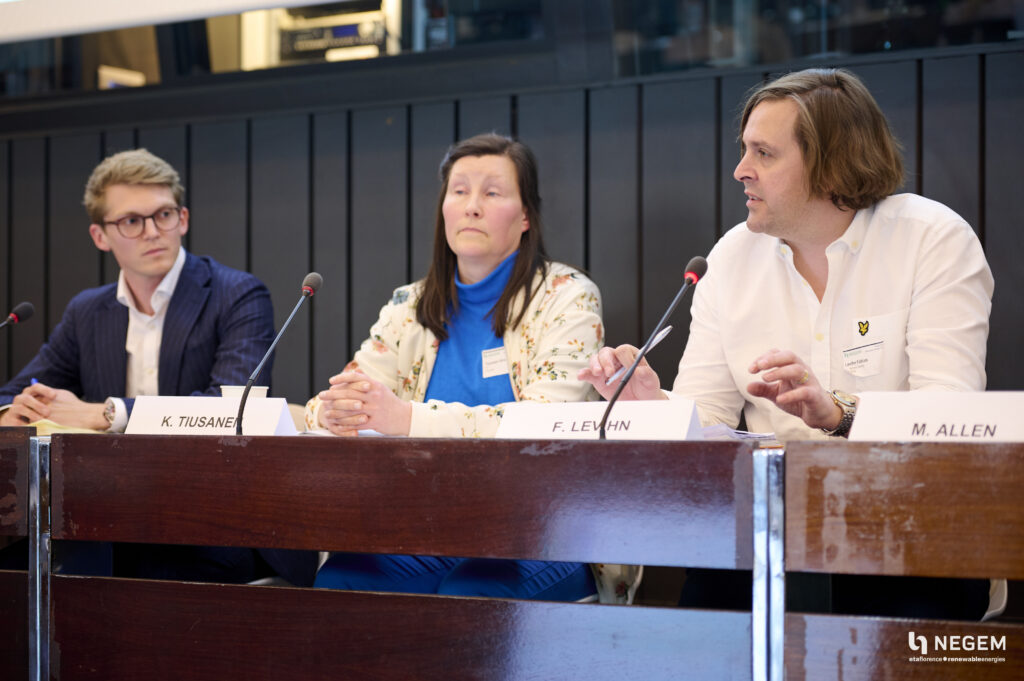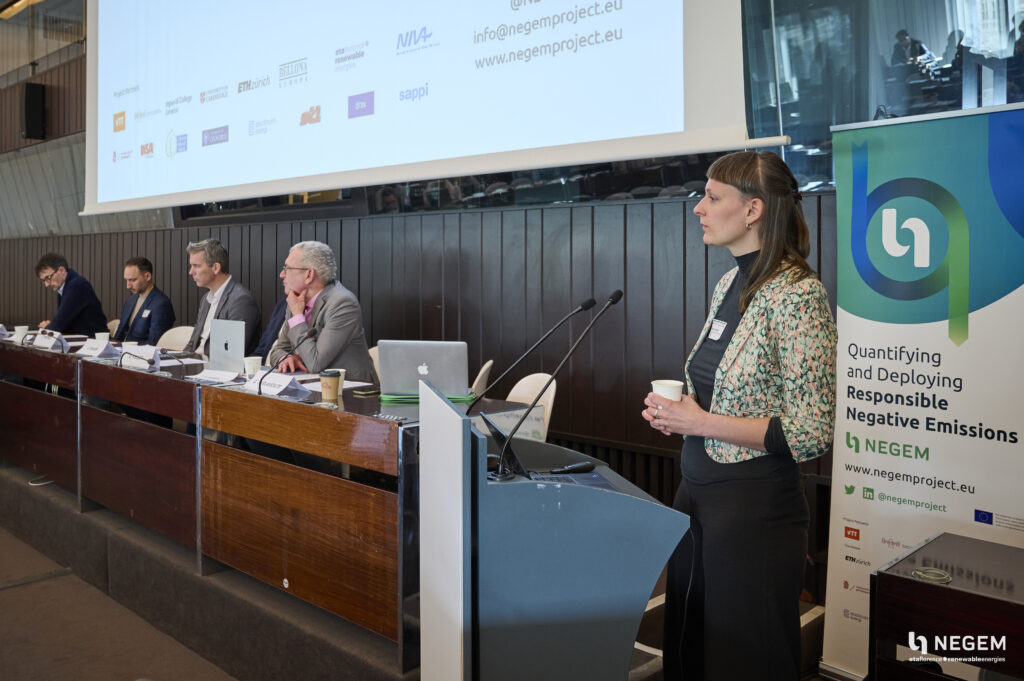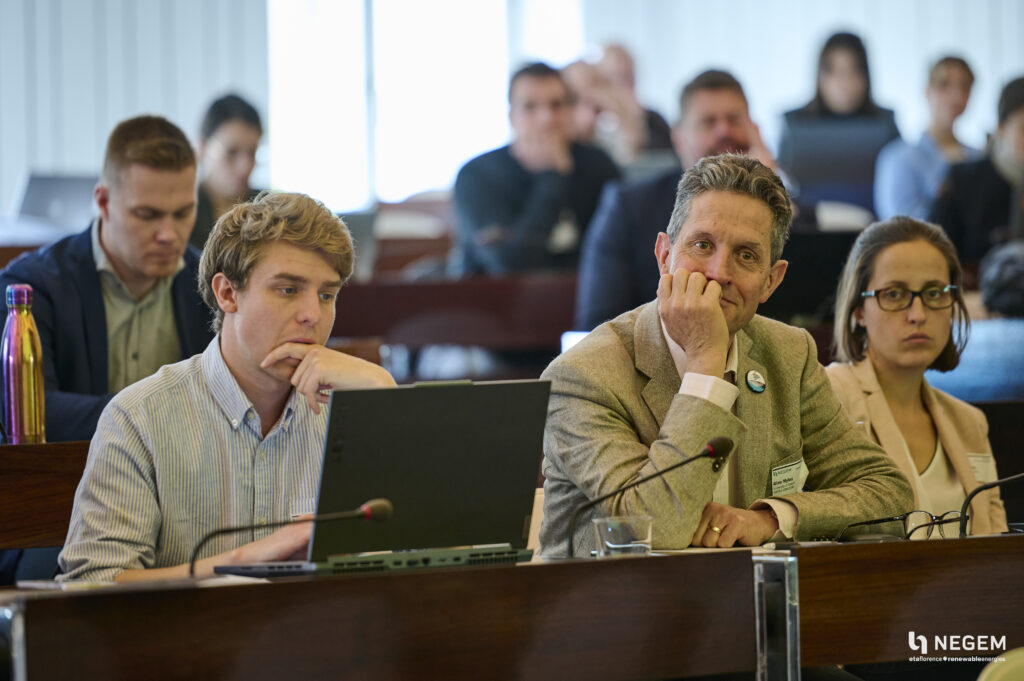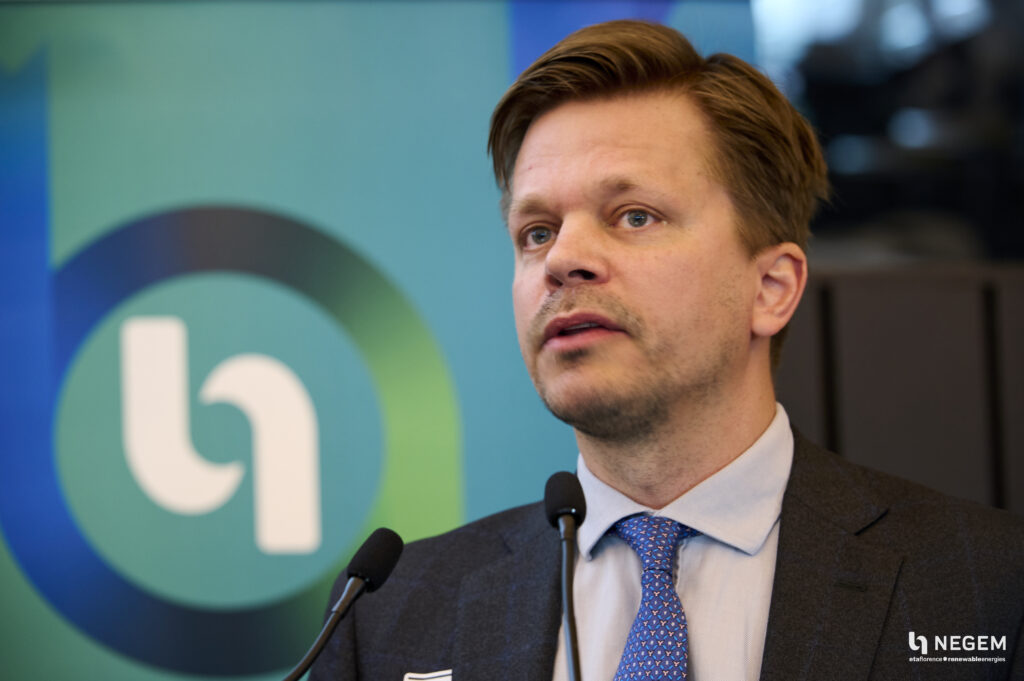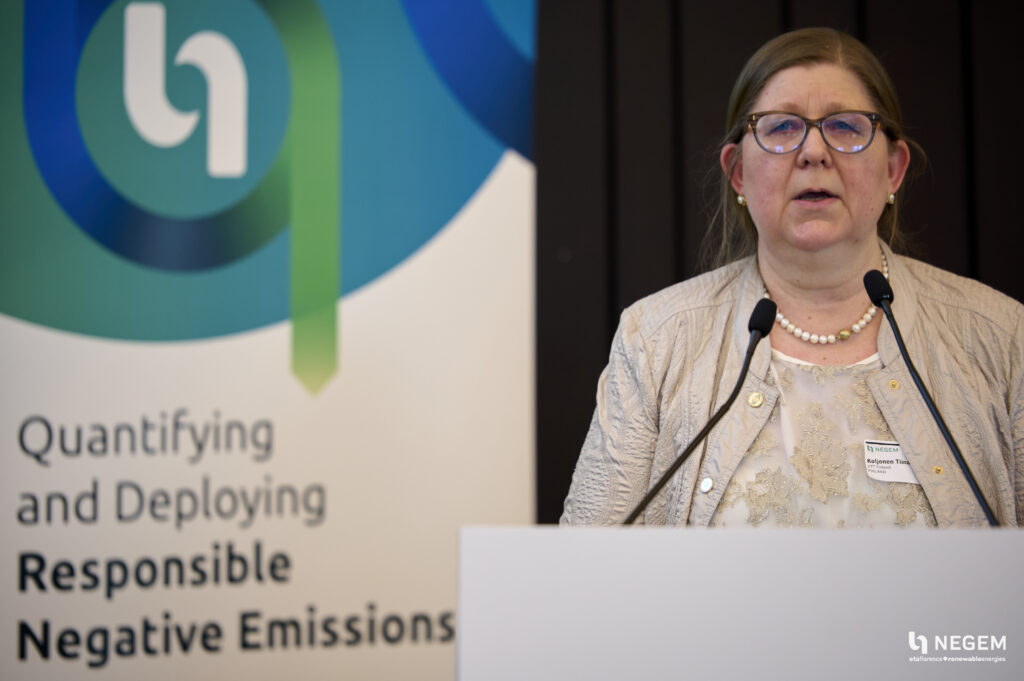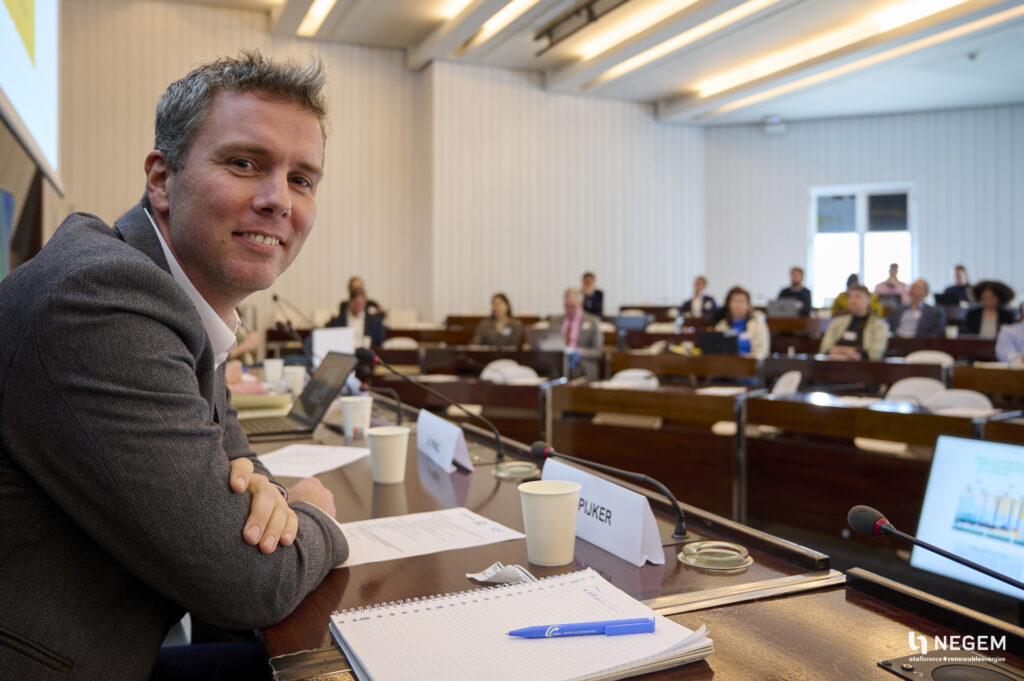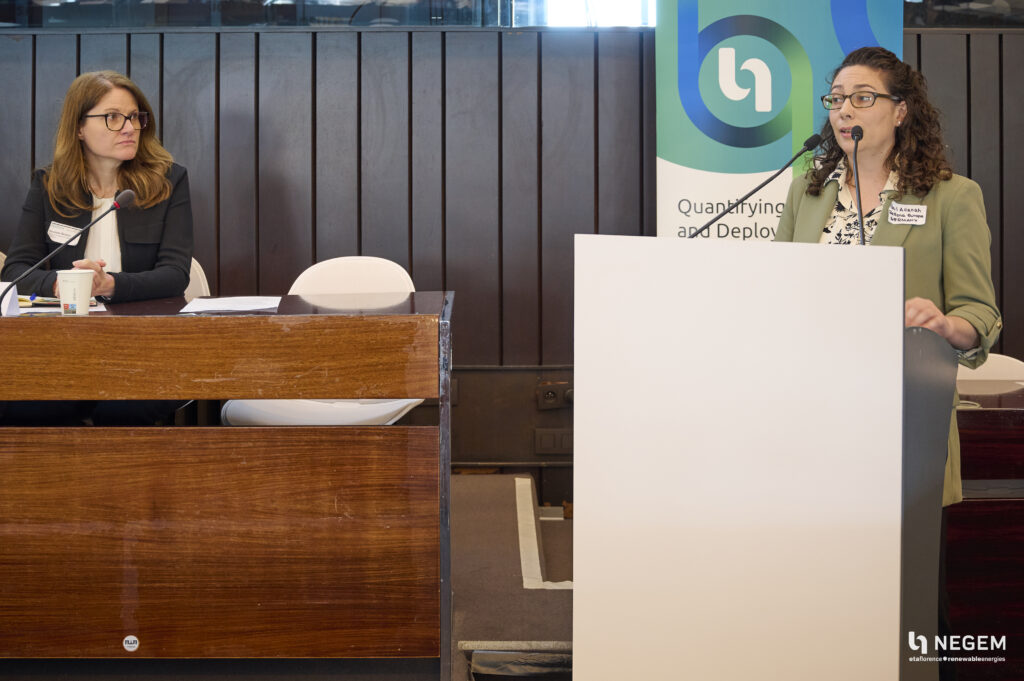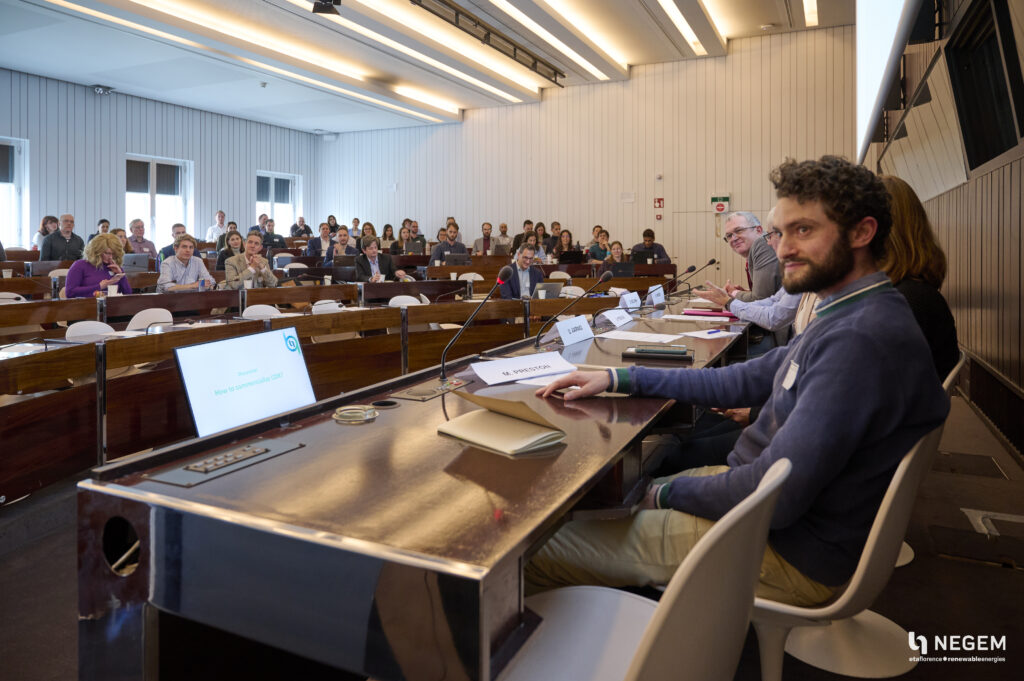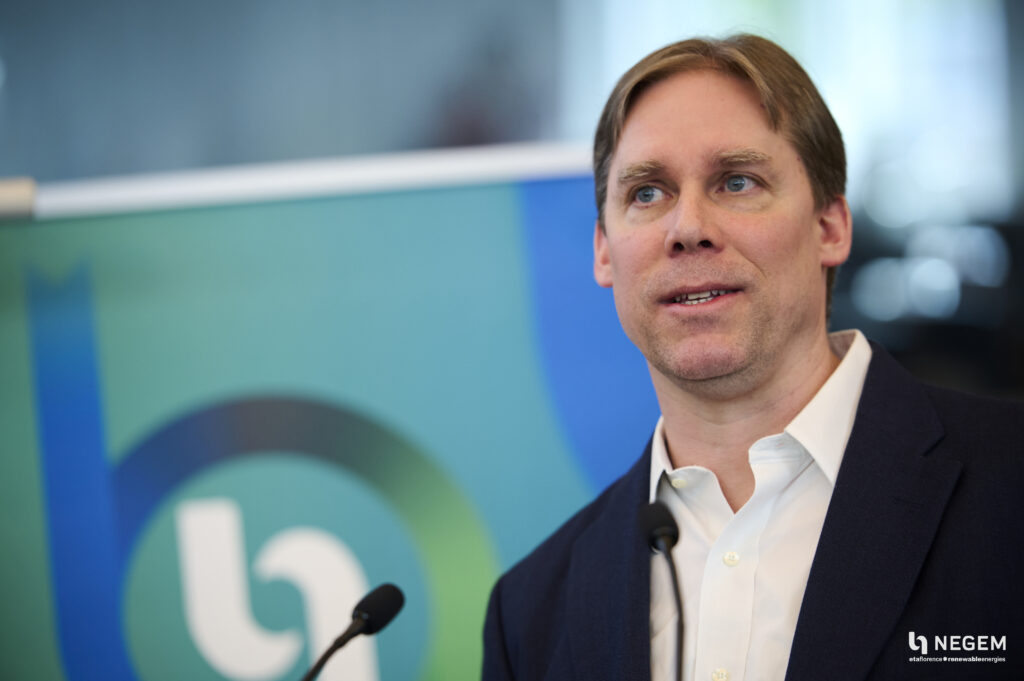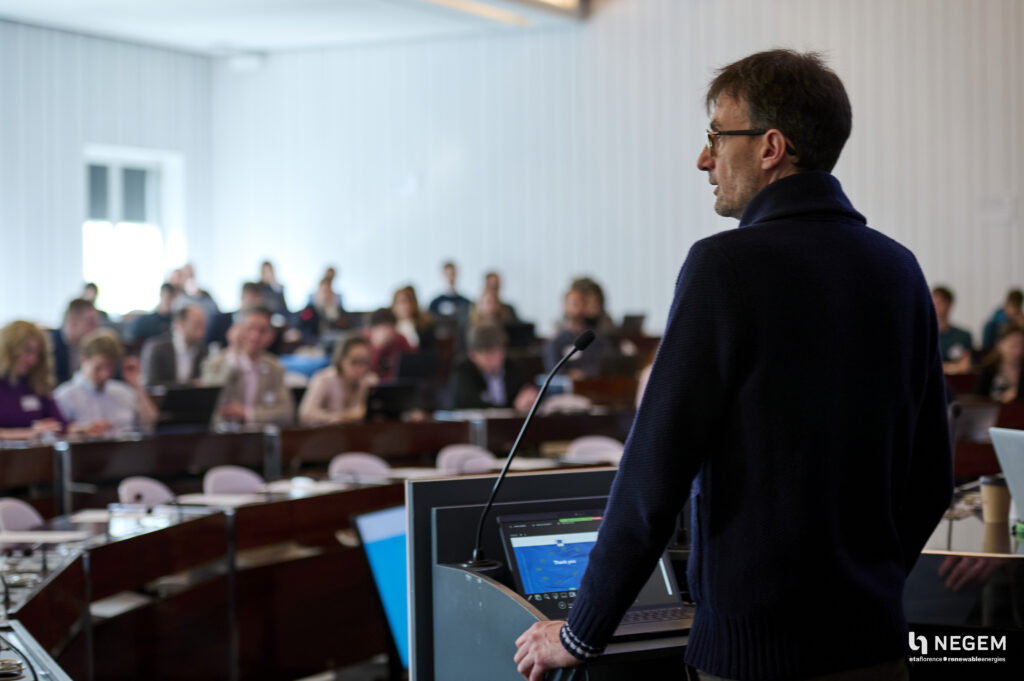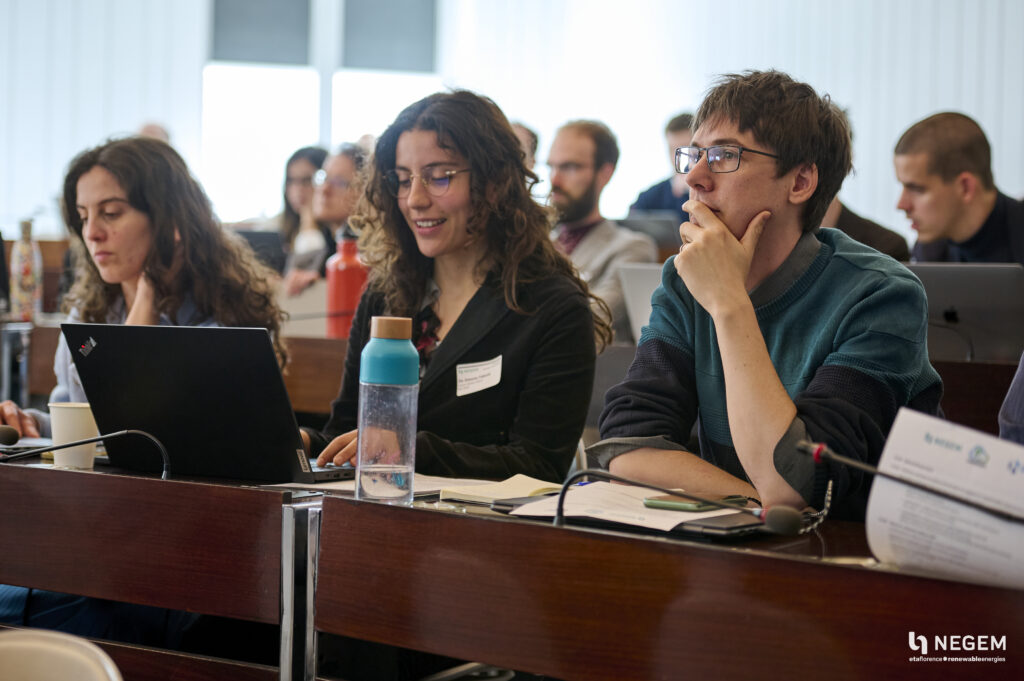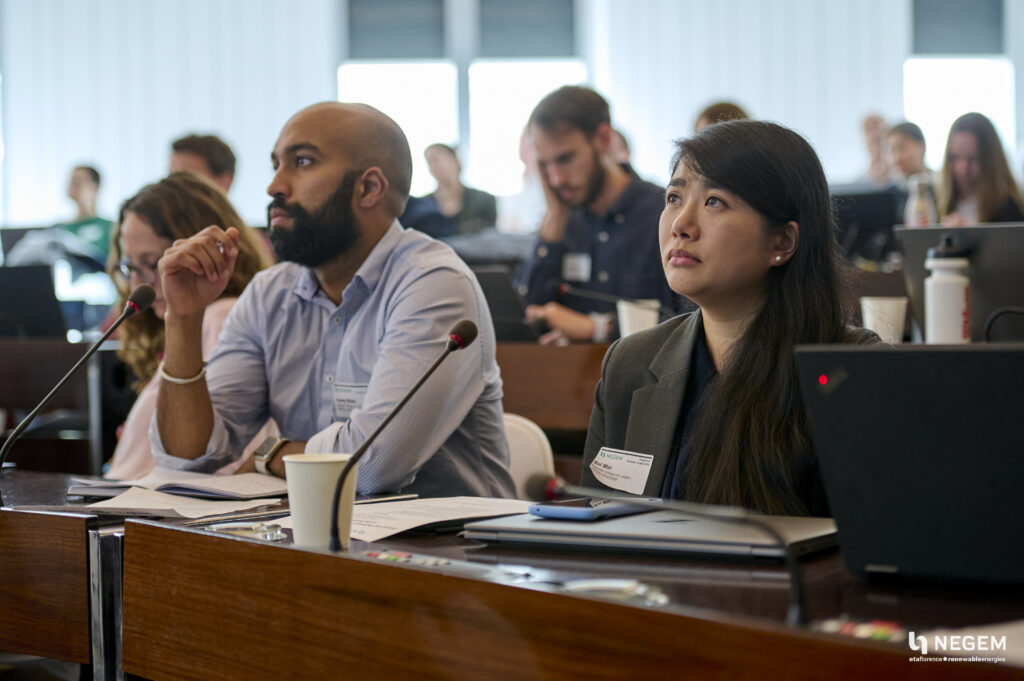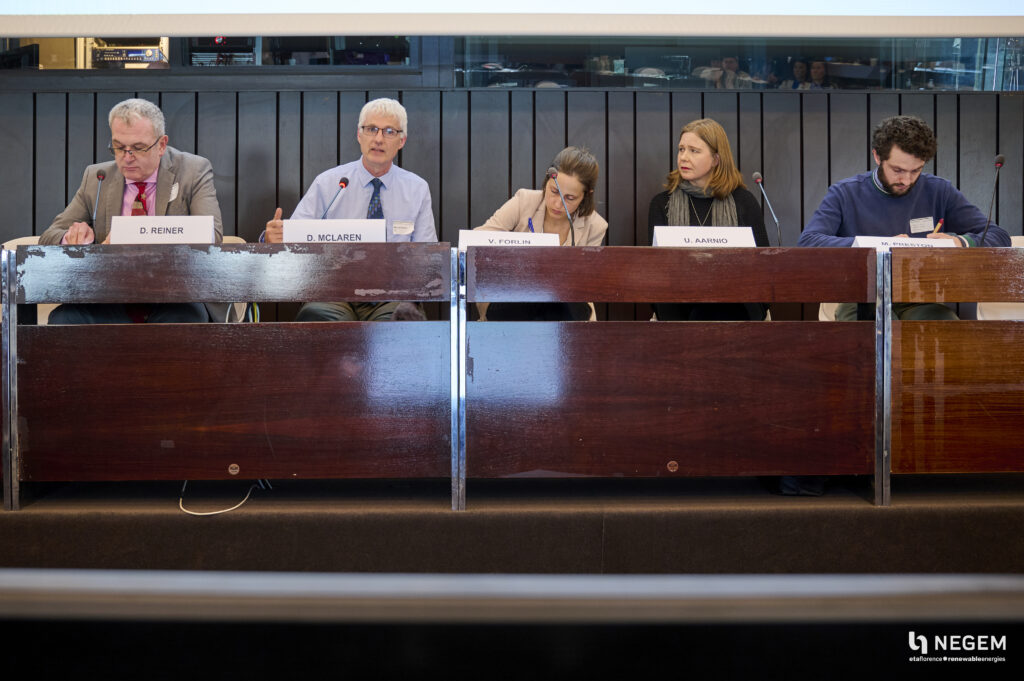The final event of NEGEM project Visions and Pathways for Carbon Dioxide Removal in the EU took place at the Square Brussels Convention Centre on 18 April 2024. The overarching aim of this event was to present the results of NEGEM and to examine the realistic potential and responsible deployment of Carbon Dioxide Removal (CDR) technologies and practices. The morning session featured keynote speeches from science and policy experts who discussed CDR’s integration into EU climate targets and strategies. Scientists from both NEGEM consortium and the sister projects OCEANNETs and LANDMARC, presented key findings on challenges to scaling CDR, environmental assessments, case studies, social acceptance, deployment scenarios, and Member States CDR portfolios.Following a networking lunch, the policy session delved into the commercialization of CDR and the formulation of policies and governance structures to support its responsible deployment in alignment with EU 2040 climate targets.
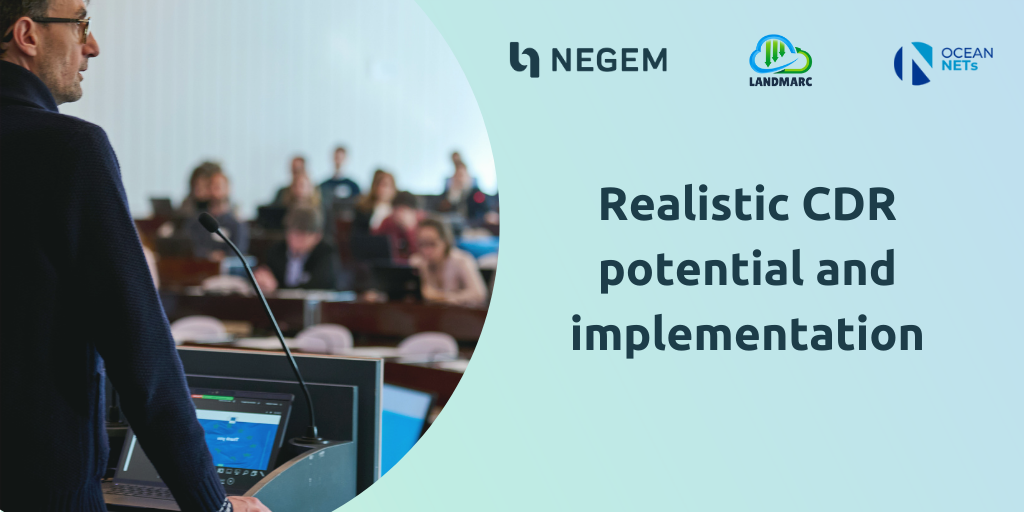
This sessions explored the critical role of Carbon Dioxide Removal (CDR) in achieving our ambitious climate goals. Key points emphasized the necessity of CDR for reaching net-zero, offsetting unavoidable emissions, and offering flexibility to our climate strategies, with some methods providing additional environmental benefits. The EU is committed to creating an enabling policy framework for widespread CDR deployment. However, all CDR methods have environmental trade-offs, highlighting the need for a diverse portfolio. Ocean alkalinity enhancement shows promise, but policy uncertainties around lime availability, infrastructure, and mining licenses remain. LANDMARC presented their work combining earth observation and case studies to assess land-based CDR, while public surveys revealed a need to address social acceptance.
Presentations
Why CDR? Steve Smith, Oxford Net Zero Slides – Video
EU 2040 targets and the role of CDR Fabien Ramos, EC DG CLIMA Slides – Video
NEGEM results on environmental impacts of CDR methods Constanze Werner, Potsdam Institute for Climate Impact Research Slides – Video
OceanNETS results on ocean-based CDR – David Keller, GEOMAR Helmholtz-Zentrum für Ozeanforschung Slides – Video
Landmarc results from earth observations, carbon farming case studies – Eise Spijker, JIN Climate and Sustainability Slides – Video
Social license to operate for CDR – David Reiner, Cambridge University, Goda Perlaviciute, University of Groningen Slides – Video
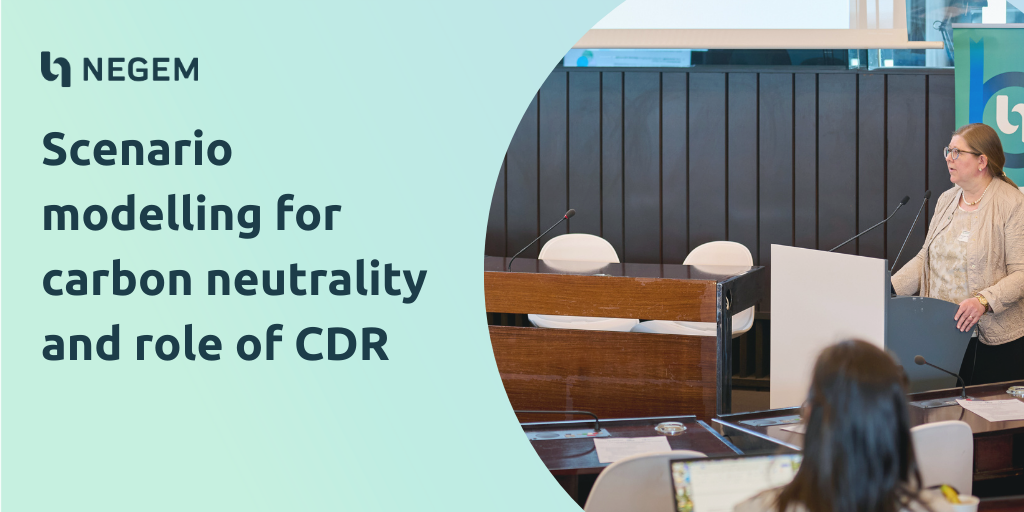
This session about scenario modelling emphasized the critical role of Carbon Dioxide Removal (CDR) in achieving carbon neutrality. While existing policies could drive a peak in fossil fuel demand, achieving net-zero by 2050 requires a substantial decline in emissions this decade, with proven technologies covering most reductions. CDR becomes essential to offsetting residual emissions, and the more we delay mitigation actions, the higher the CDR need will be. A diverse CDR portfolio is essential. In NEGEM 1.5 scenarios, BECCS is likely to play a dominant role initially, with DACCS scaling up significantly in later decades. Multi-dimensional analysis highlights the impact of CDR choices on the electricity grid, and the socio-economic trade-offs between different CDR strategies.
Presentations
Keynote speech: The role of negative emissions in clean energy transitions Ilkka Hannula, IEA Slides – Video
NEGEM 1.5°C mitigation scenario results for Europe Tiina Koljonen, VTT Technical Research Centre of Finland Slides – Video
Multi-dimensional analysis of negative emission technologies and practices Mai Bui, Imperial College London Slides – Video
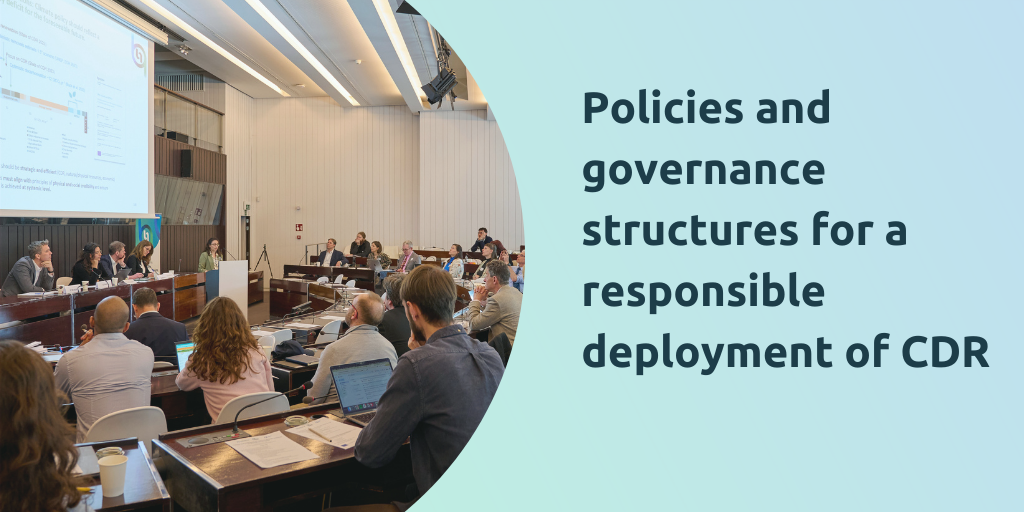
This session on policies and governance emphasized the need for a clear definition of CDR and separate targets for emission reductions, permanent CDR, and land-based solutions. CDR’s role should be supplementary to rapid emissions cuts, with policies reflecting a ‘supply-driven’ approach focused on demonstrable removals. Crucially, policies should accurately account for carbon removal timescales, adopt a holistic Earth system perspective, and integrate climate goals with biosphere stewardship. For ocean-based CDR, a comprehensive governance framework is needed, drawing on existing principles and prioritizing transparency. This should consider cumulative impacts, address potential trade-offs, and potentially involve new or expanded policy structures.
Key policy messages from the three Horizon 2020 projects
NEGEM: Climate policy frameworks for CDR – Allanah Paul, Bellona Europa and Fabiola de Simone, Carbon Market Watch Slides – Video
LANDMARC: Observations on carbon farming, MRV and finance, Eise Spijker, JIN Climate & Sustainability Slides – Video
OCEANNETS: Policy issues of ocean-based CDR methods – Wilfried Rickels, Kiel Institute for the World Economy, Barbara Neumann, Research Institute for Sustainability Helmholtz Centre Potsdam Slides Rickels – Slides Neumann – Video
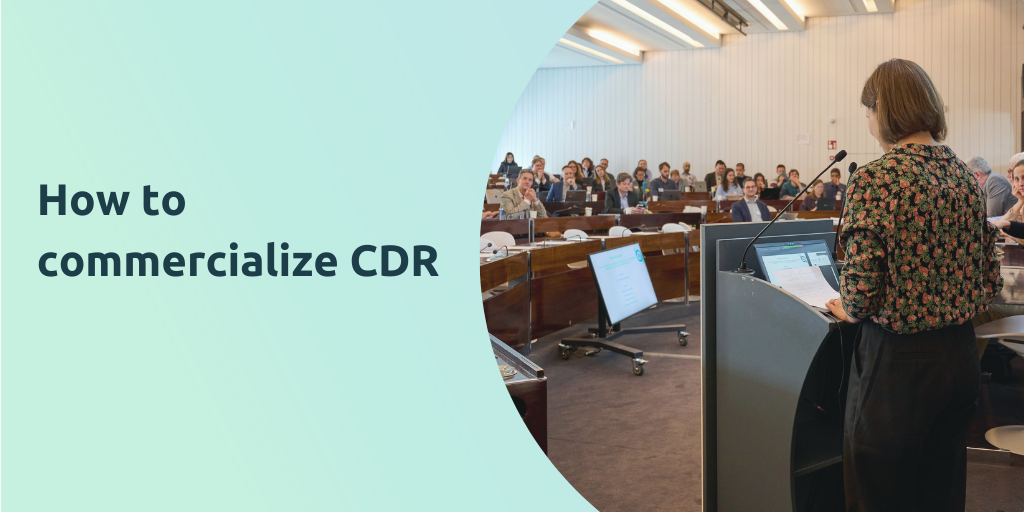
This session highlighted the urgent need to scale up CDR to achieve carbon neutrality, emphasizing the importance of diverse CDR methods and the potential for shifting mitigation costs upstream to the fossil fuel industry. Market mechanisms and principles like Extended Producer Responsibility were introduced and discussed. Industry speakers emphasized the need for both demand incentives and enforcement mechanisms to drive the market. They noted that while the technologies for carbon capture exists, developing sustainable business models remains a challenge, requiring long-term policy certainty and customers willing to pay for the full value chain.
Presentations
Results from NEGEM studies on market mechanisms – Myles Allen, Oxford University Slides – Video
Comments and facilitated discussions with NEGEM industrial partners Fabien Levihn, Stockholm Exergi; Kirsi Tiusanen ST1; Matthew Borghi, Drax; Slides ST1 – Slides Drax – Video
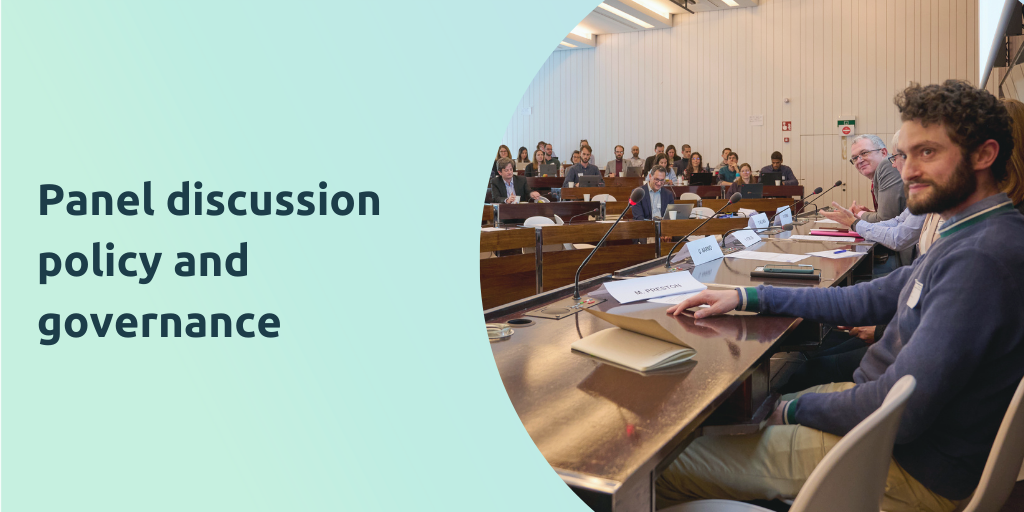
Panel discussion: How to formulate policies and governance structures to support responsible deployment of CDR for the EU 2040 climate targets? Moderated by Mark Preston Aragonès – Bellona Europa
The final panel discussion focused on the challenges of governing the agricultural sector and the need for governance beyond individual farmers, encompassing the entire food value chain to incentivize emission reductions and carbon removals. Other aspects raised were the importance of separate targets for reductions, sequestration, and permanent removals to avoid diluting mitigation efforts and the challenges of scaling removals equitably and sustainably.
Panelists:
- Ulriikka Aarnio, CAN-Europe
- Duncan McLaren, UCLA
- Valeria Forlin, EC DG Clima
- David Reiner, University of Cambridge
Find some snapshots of the event in the gallery below.
